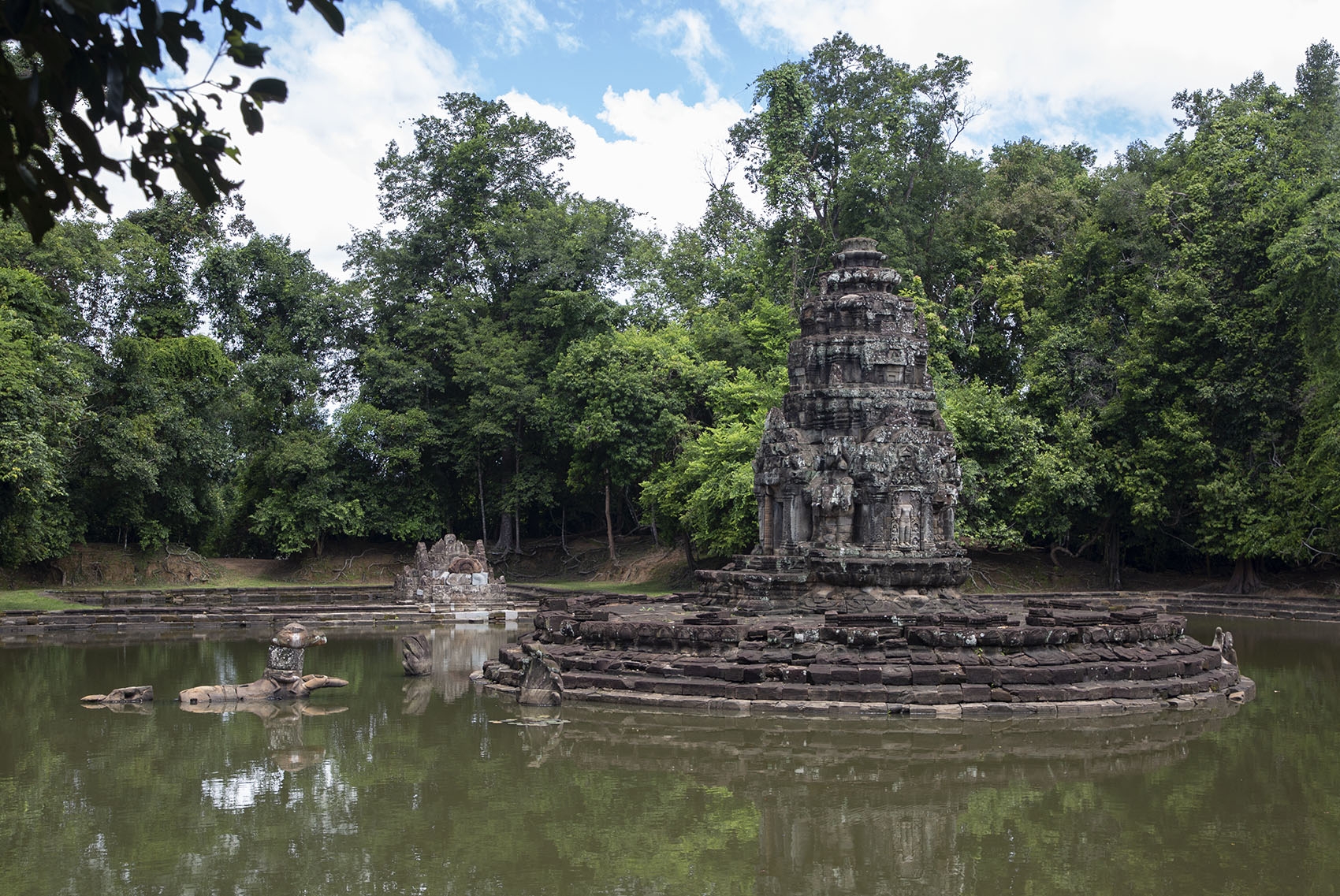- Area: Siem Reap Province > Krong Siem Reab > Sangkat Nokor Thum > Leang Dai Village
- | Type: Ancient Remains & Temples
Constructed during the era of king Jayavarman VII (reign 1181-1218 AD), Neak Pean (or Neak Poun) is one of the most mysterious, and unique temples, of the Angkorian Empire. Located on a man-made island at the center of a massive baray (lake), hidden amongst the dense woods is a very special Buddhist temple. Rising from a double circular lotus-styled base, the central shrine sits at the center of a large basin with a further four smaller shrines that join this basin with smaller basins at each cardinal point.
Located east of Preah Khan temple which it is associated, and situated at the center of Jaytataka Baray which measures 3600 by 900 metres, the island of Neak Pean is 350m per side covering 120000 sqm featuring laterite walls with steps at each cardinal point forming its perimeter. The temple and basins discussed below sit at the very center of the island and are surrounded by auxiliary basins not formed of laterite.
The singular and central shrine opens to the east and features large depictions of Avalokiteshvara covering the false doors on the other sides, with a tri-headed elephant in between each one, atop which is a raring lion. As mentioned, it uniquely rises from a circular double lotus, which is then encircled by intertwined naga serpents who present themselves on either side of a statue of the horse, Balaha.
The horse Balaha is a character from Buddhist legend within the Karandavyuha Sutra where Balaha is a prior incarnation of Avalokiteshvara who saves the life of a prior incarnation of the Buddha himself.
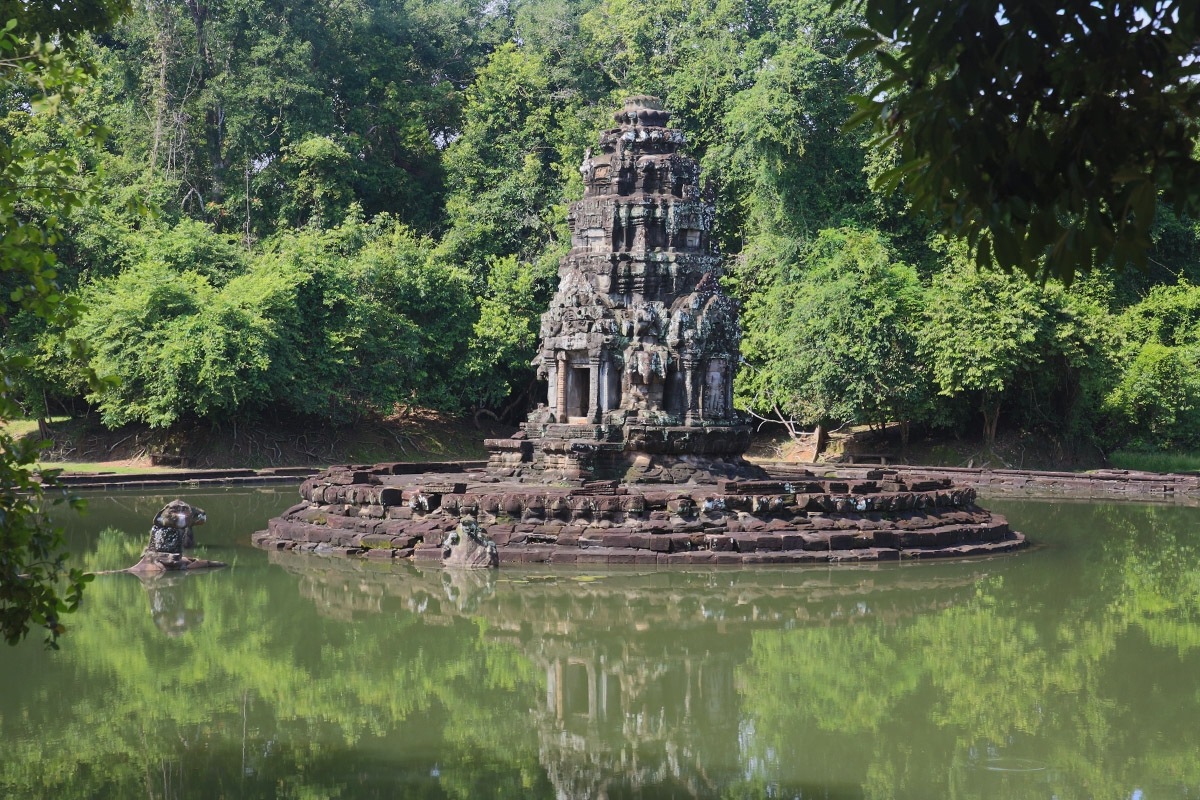
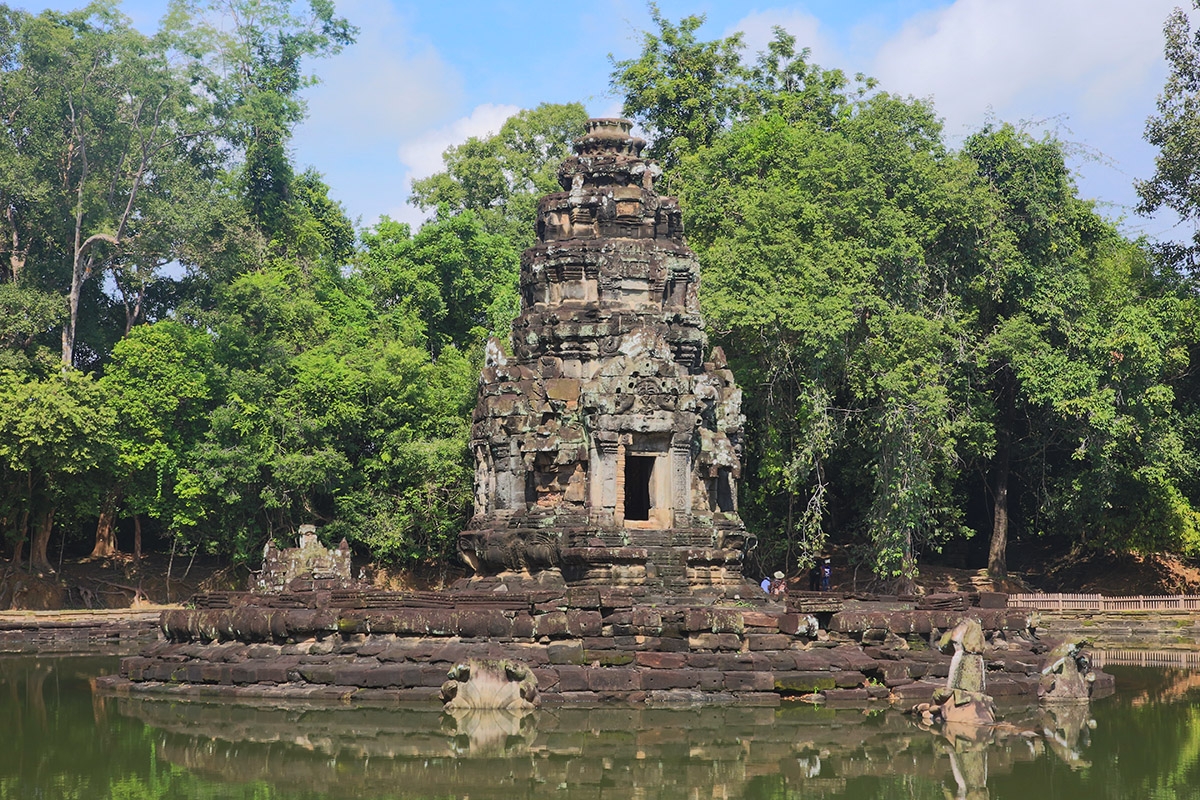
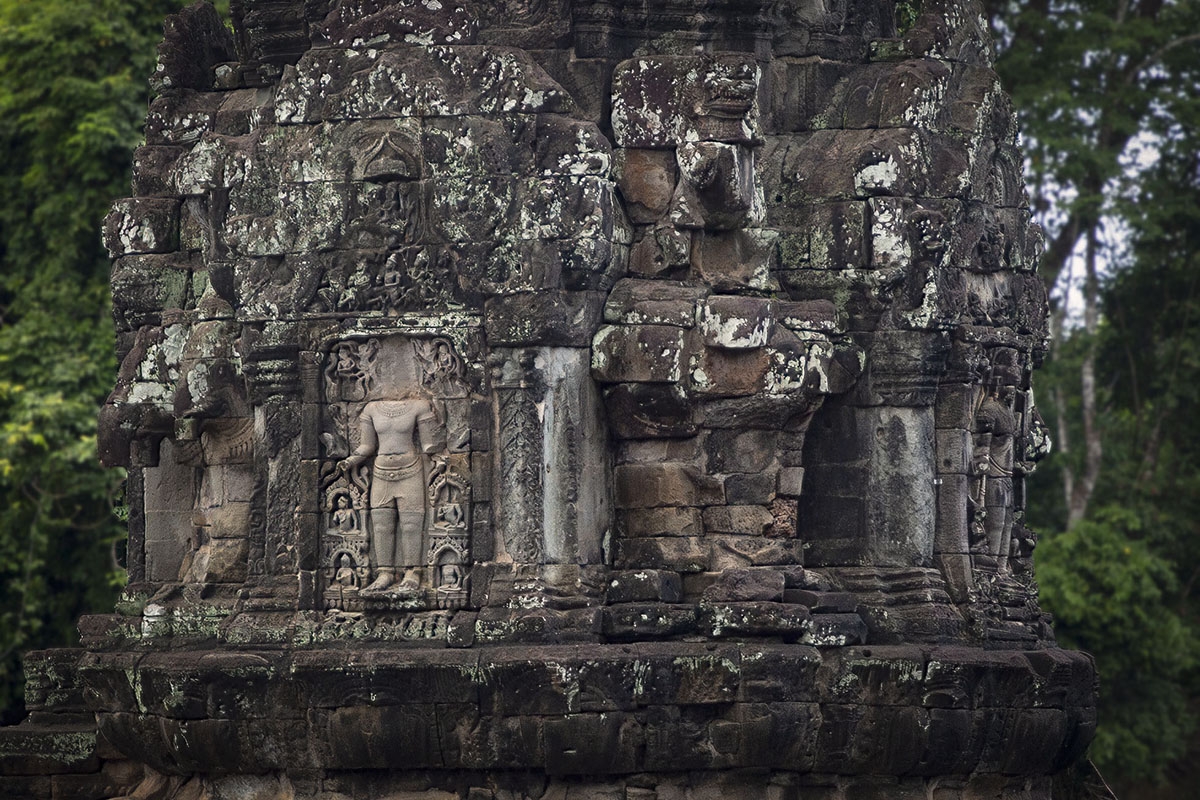
The aedicules at each cardinal point, joining the central basin with the respective outer basin, also featuring depictions of Avalokiteshvara, and numerous symbolism, one featuring a palace scene in its pediment, with all being topped by a four-sided Chaitya again depicting Avalokiteshvara. The highlight feature of these aedicules is their canalisation that allowed water to flow out of the central basin, into the aedicule, over a pedestal and out of a spout in the form of a lion head on the south aedicule, a horses head on the west, an elephant on the north and a human head on the east.
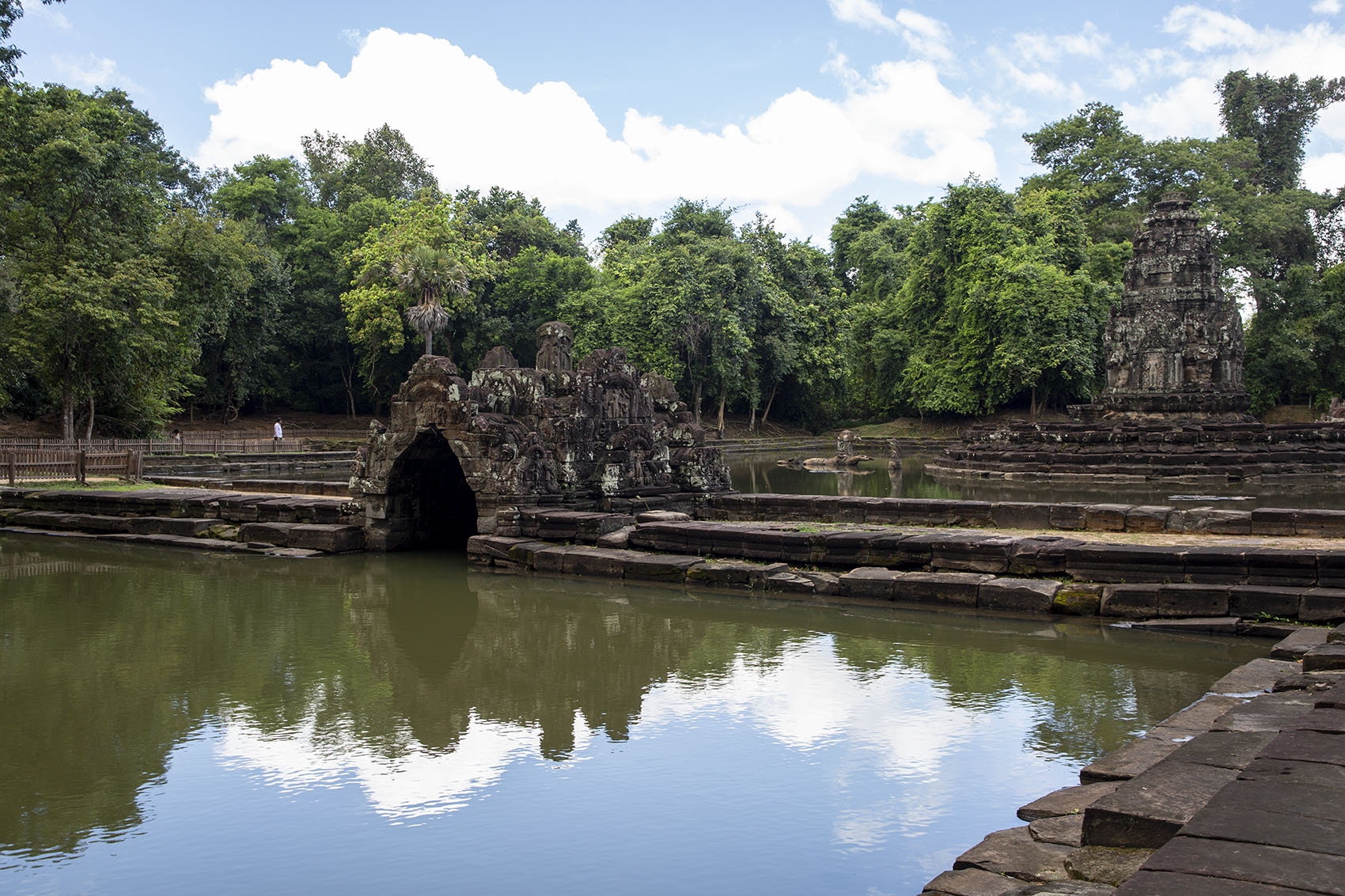

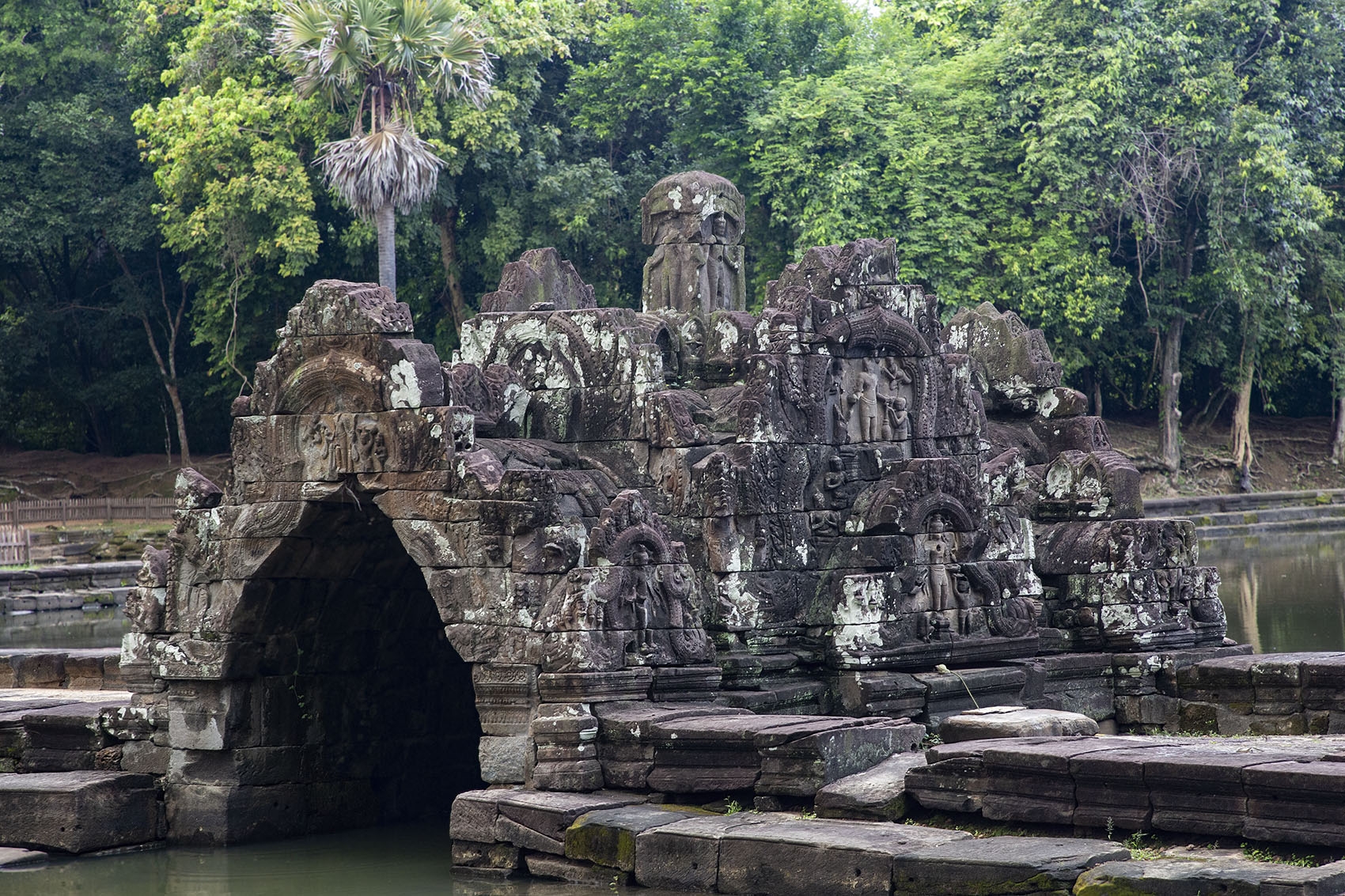
At the edge of each of the four outer basins are small laterite vestibules of simple construction with small edifices, numerous pedestals were found inside these, and some are still present. Its believed that these shelters contained the 14 divinities mentioned in an inscription found at the adjacent Preah Khan temple.

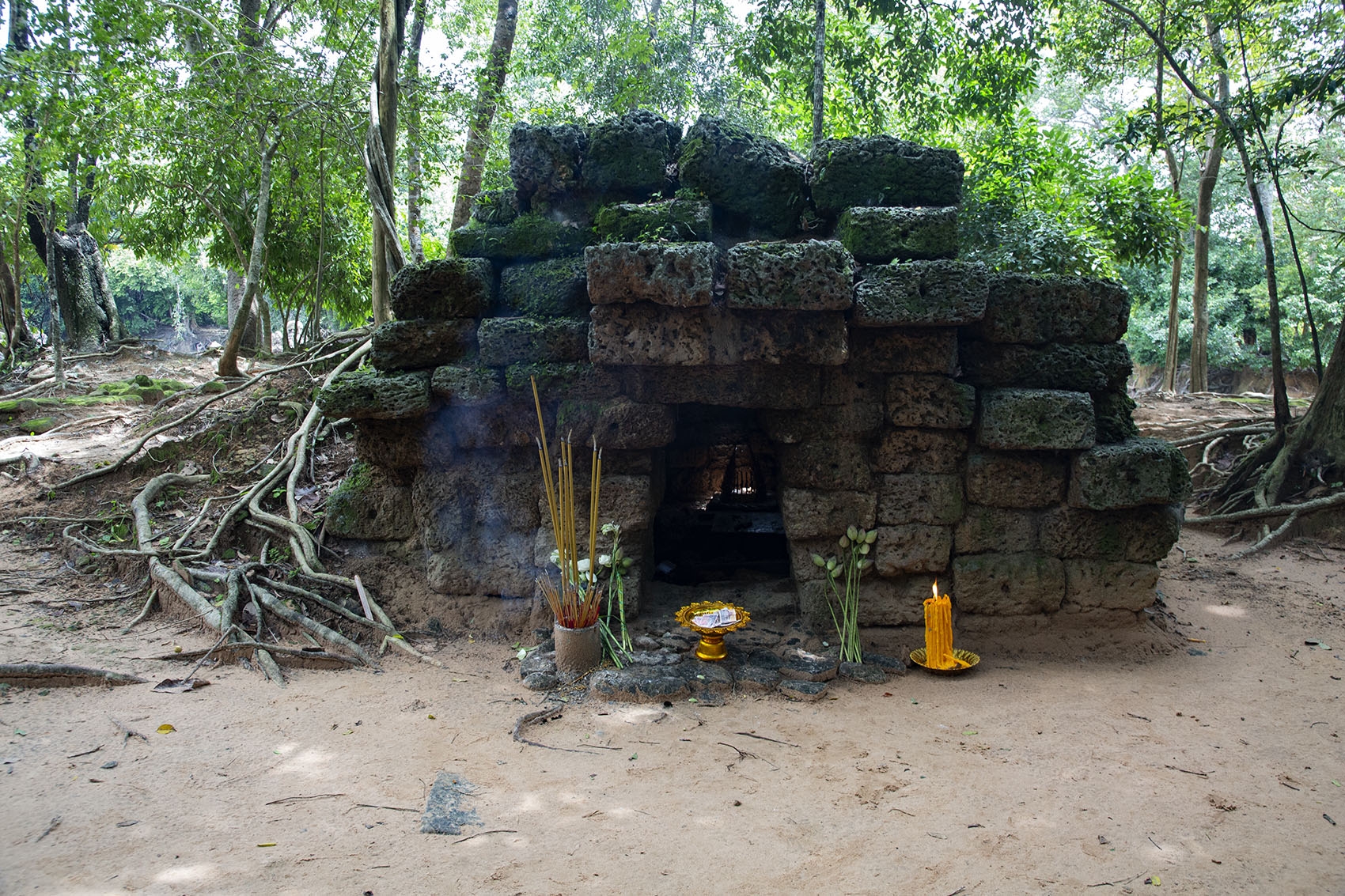
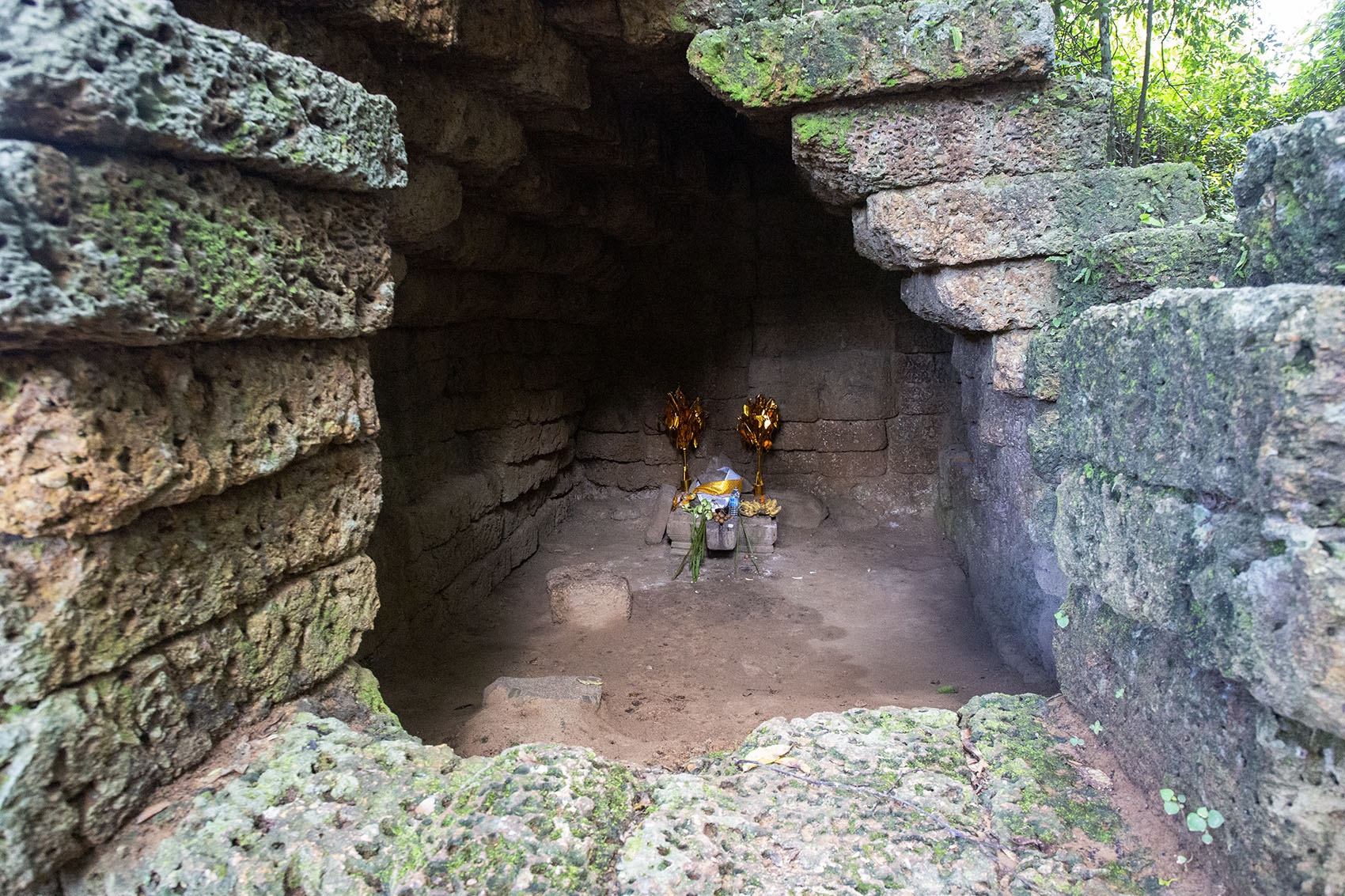
Visiting Neak Pean
The site is open from 7.30 AM to 5.30 PM. As per the other temples, an Angkor Pass is required. The site is accessed via a walkway at the center of the northern side of the Jayatataka Baray. There is a large parking bay across from the entrance which also features several stalls selling drinks etc.
To see the detail of any of the reliefs, either on the central shrine or the aedicules, a camera with a zoom lens will be useful.
Scenic Nature trail
It doesn’t take long to explore the site and if you have more time there is a nice and scenic nature trail that takes you around the outer edge of the island with bench seats to enjoy a peaceful view over the waters of the Baray. The trail begins near the newly restored landing on the north side, following the outer edge where you can see the laterite retaining wall of the island.
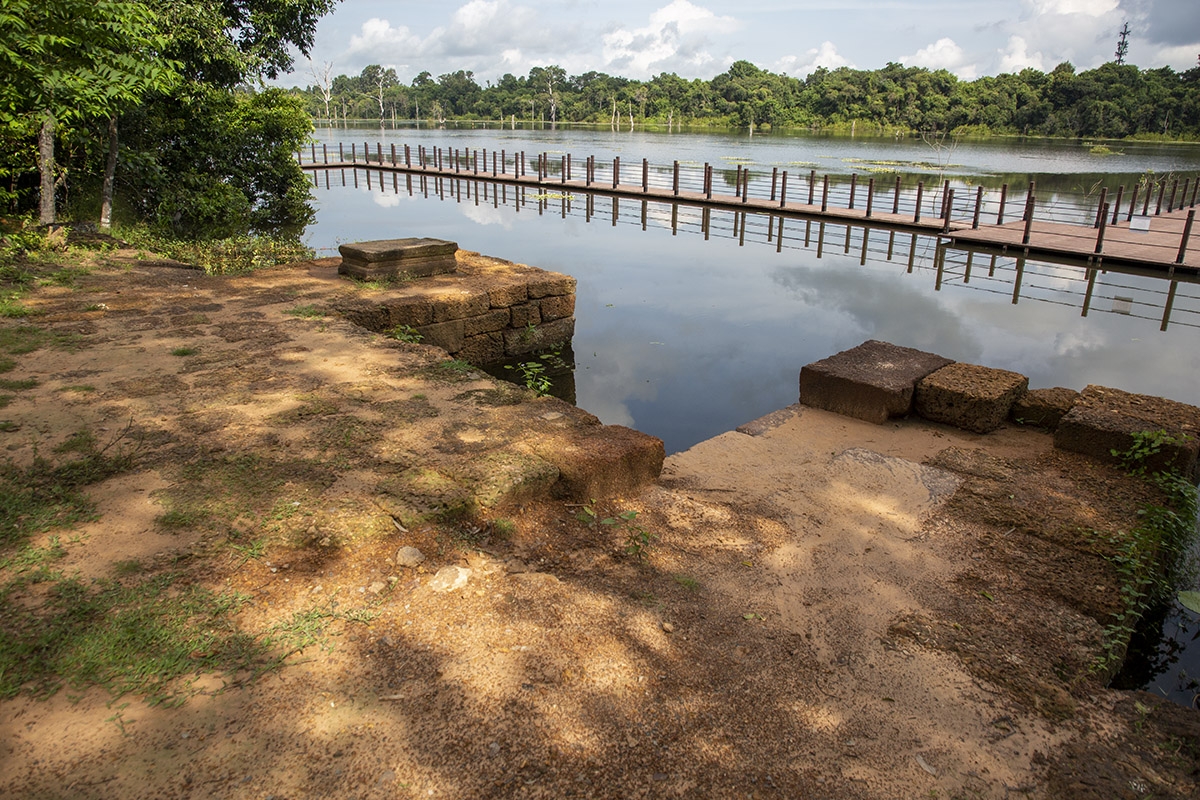
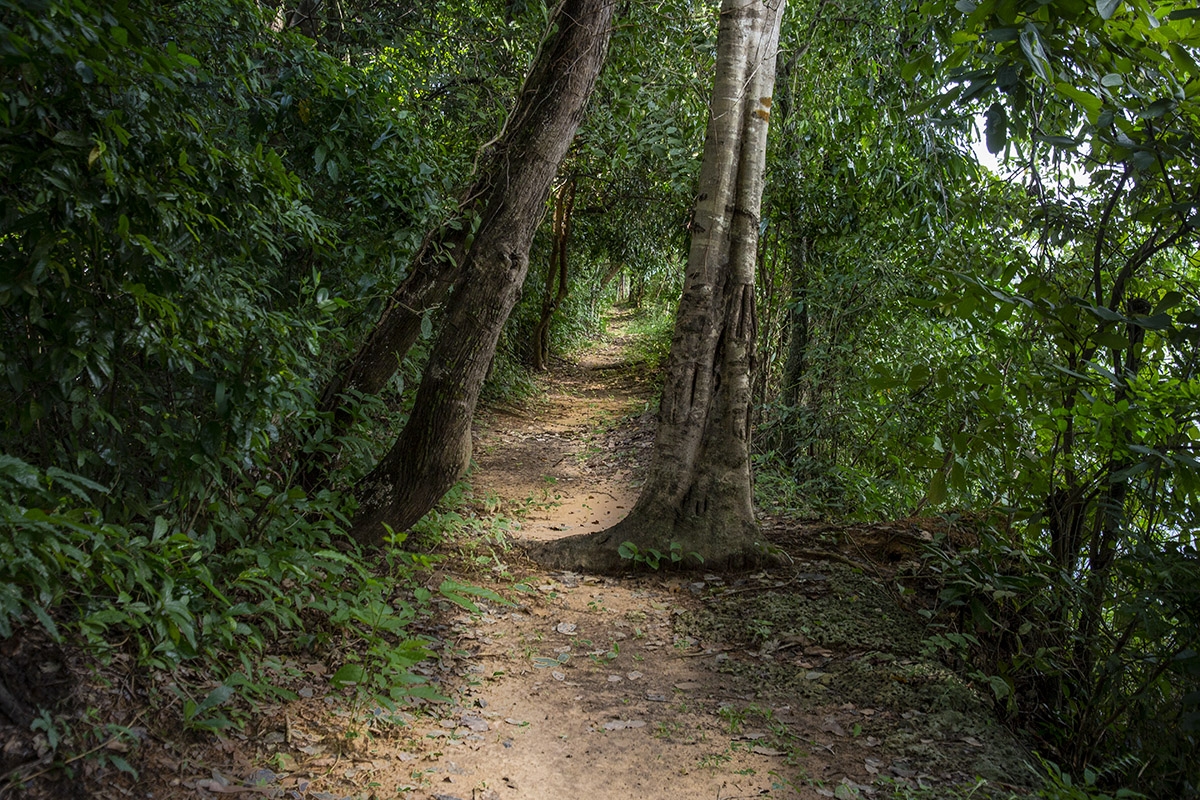
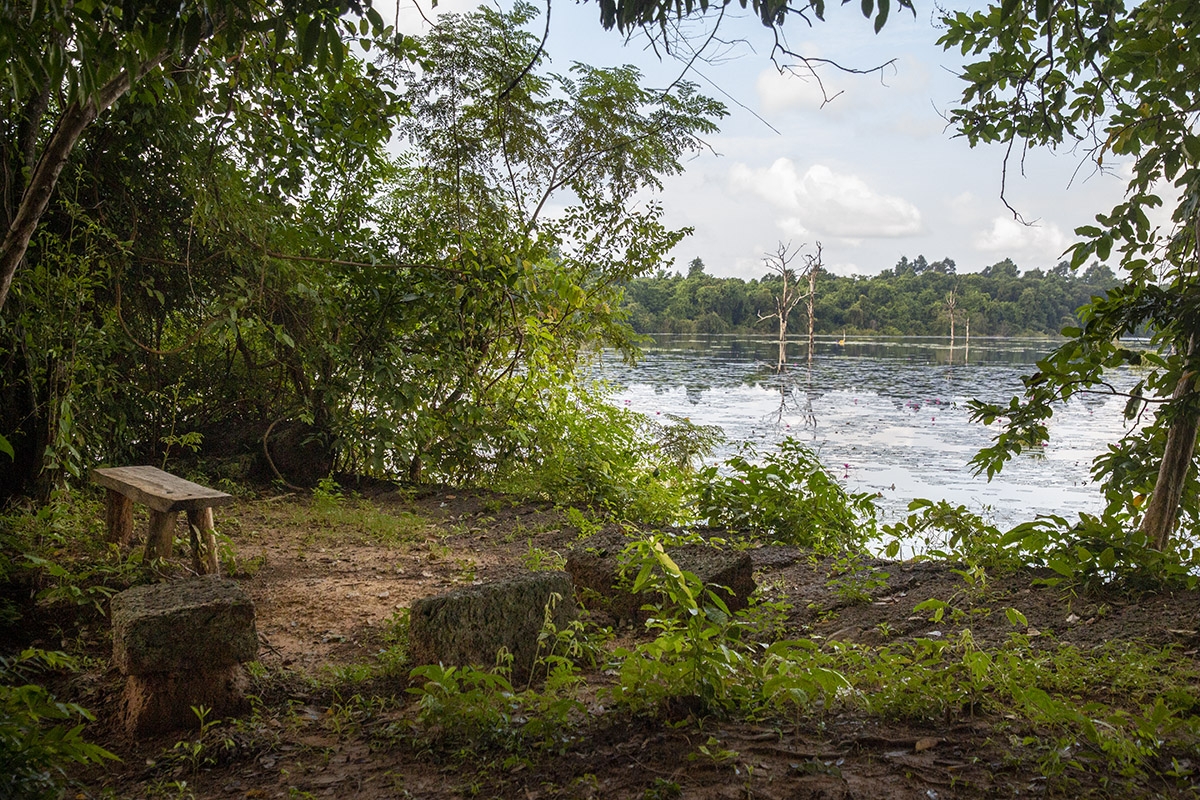
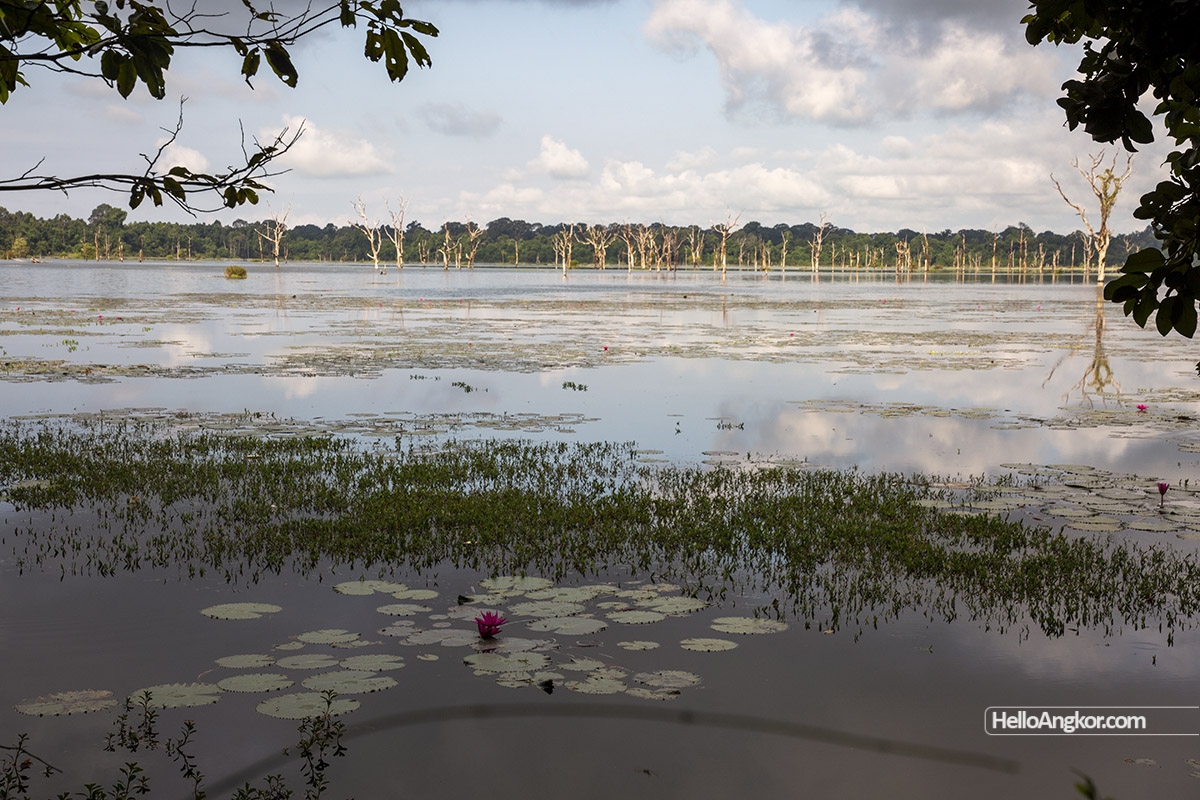
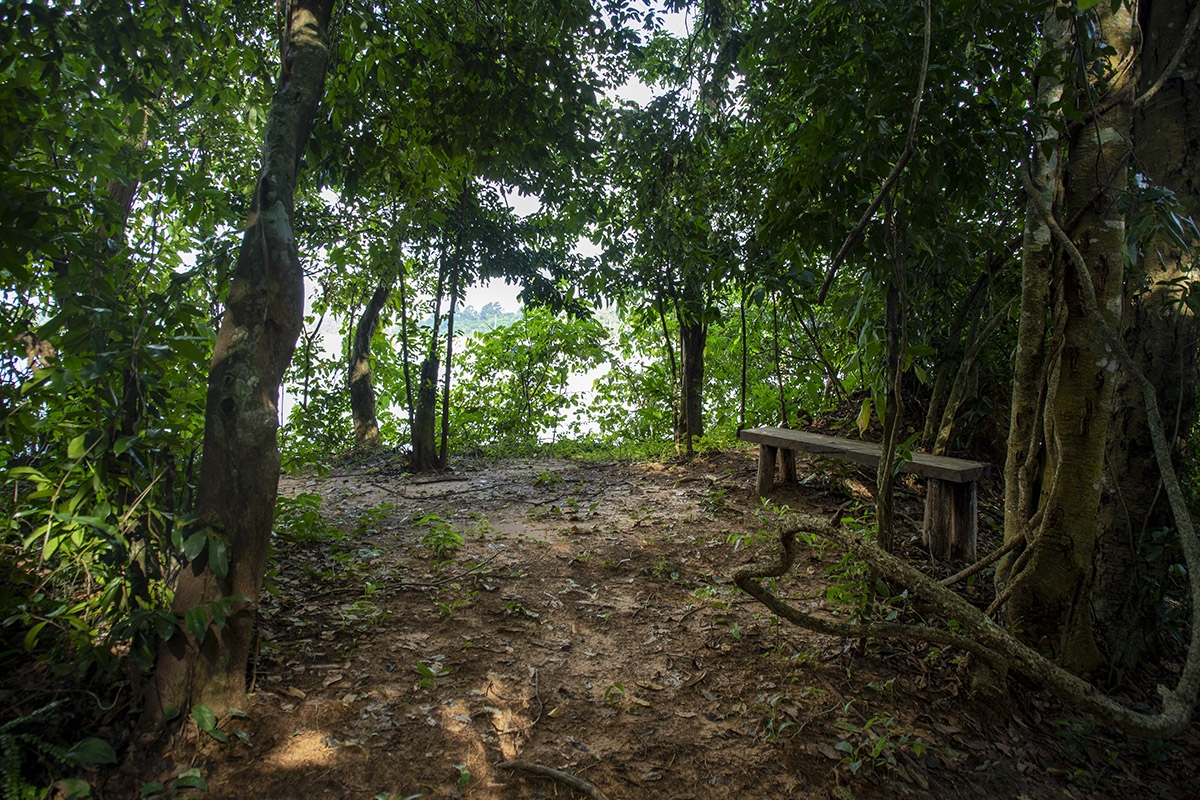
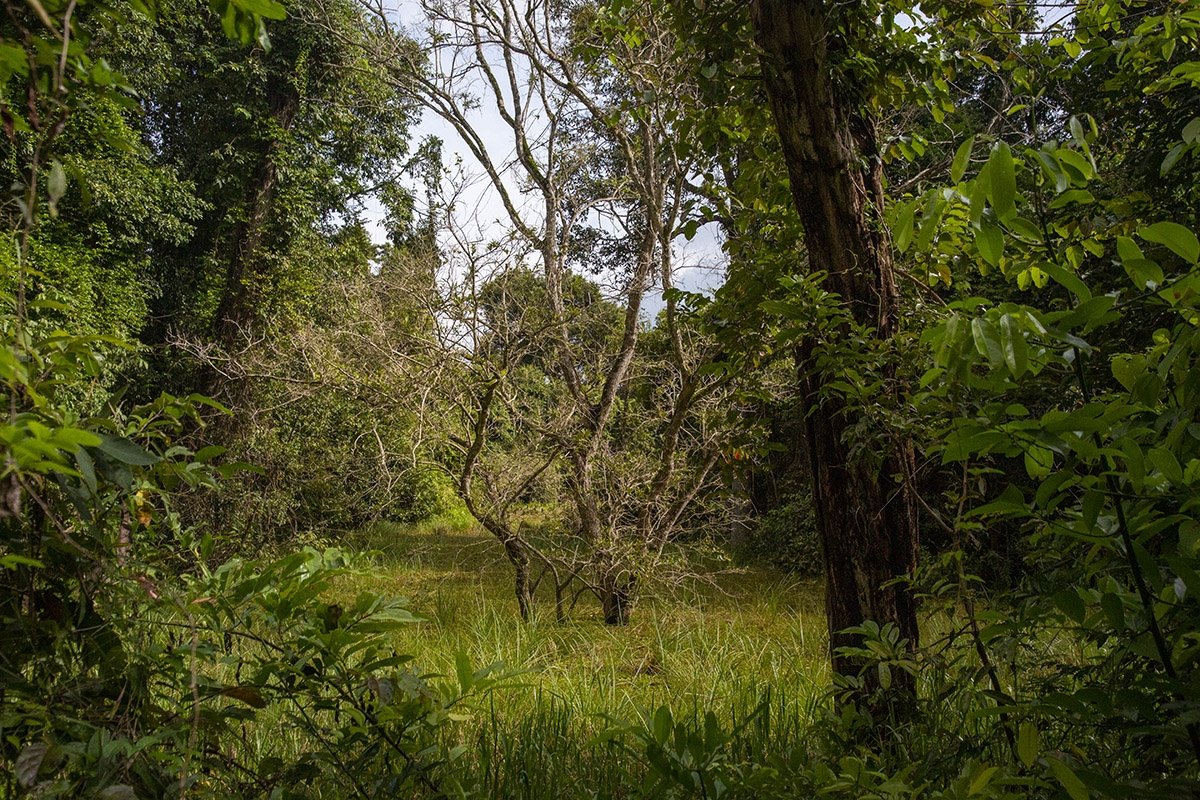
History
The site itself is attributed to the 12th century and king Jayavarman VII connecting with the adjacent temple, Preah Khan. That said, it is interesting to note that during the original restoration work researchers noted the false doors of the central temple likely being closed off at a later date and the recycling of stone masonry.
It is widely believed that Neak Pean is a representation of the famed Lake Anavatapta in India. Lake Anavatapta was a feature of Buddhist cosmology, the source of all water, and home of the naga. An article by Jean Boisselier, listed at the bottom of the page, provides greater detail in the Khmer context. Interestingly, the Harvard Art Museum has a scroll featuring an interpretation of Lake Anavatapta to which comparisons can be drawn, a reference to that is also listed below.
Originally, the site would have been reached by boat with access steps in the outer laterite wall at each cardinal point that was originally guarded by stone elephants. To that end, the western side of the baray features a terrace/jetty that leads to the bollarded causeway preceding the east entrance to Preah Khan.
Restoration
Clearance works and the initial research of the site were carried out by Henri Marchal in 1924 and restoration by anastylosis by Maurice Glaize in 1938. More recently, in 2022, APSARA completed further restoration works along with the completion of a new access bridge for visitors.
Illustrated layout and restitutions by Marchal in 1926
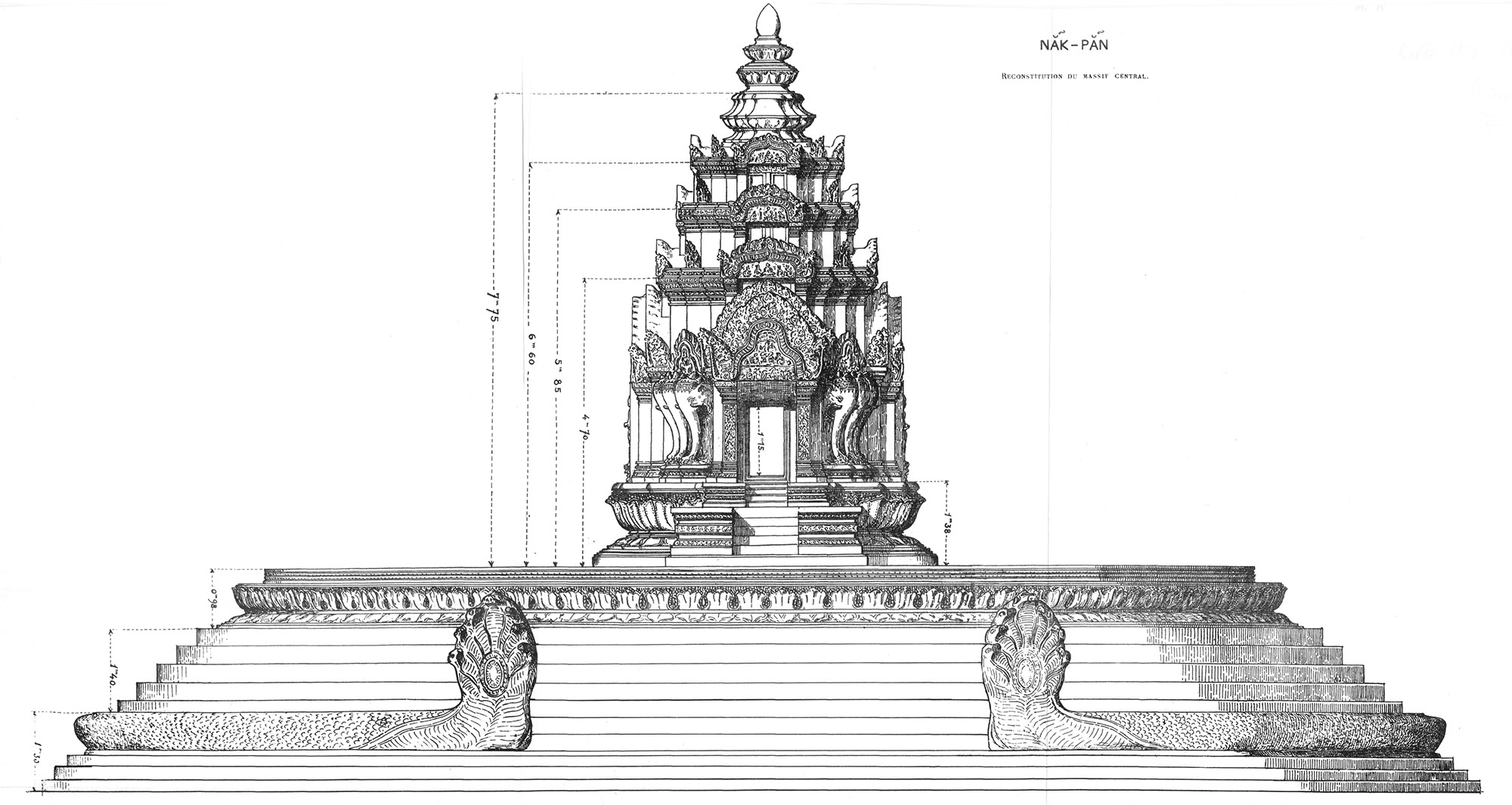

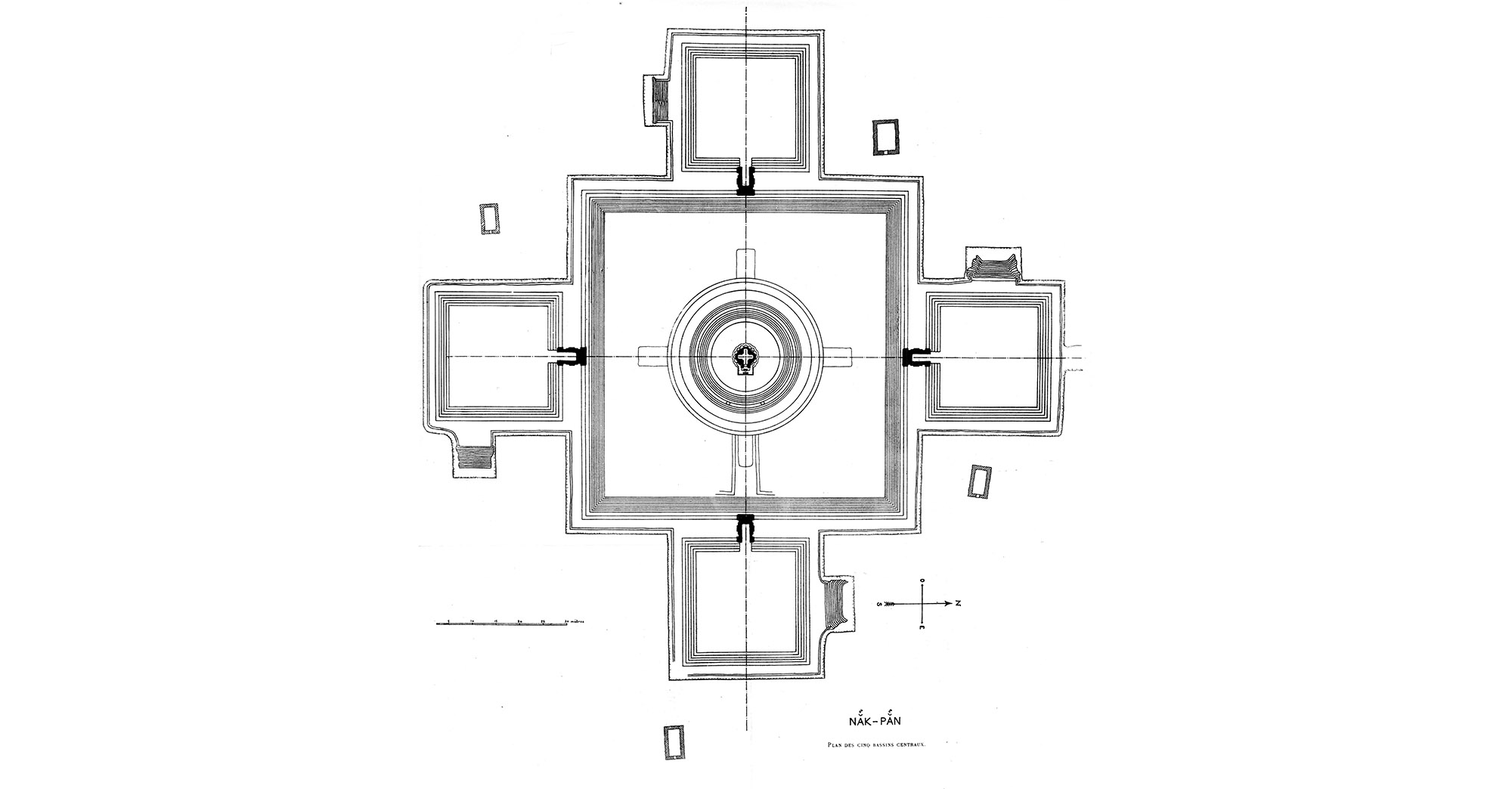
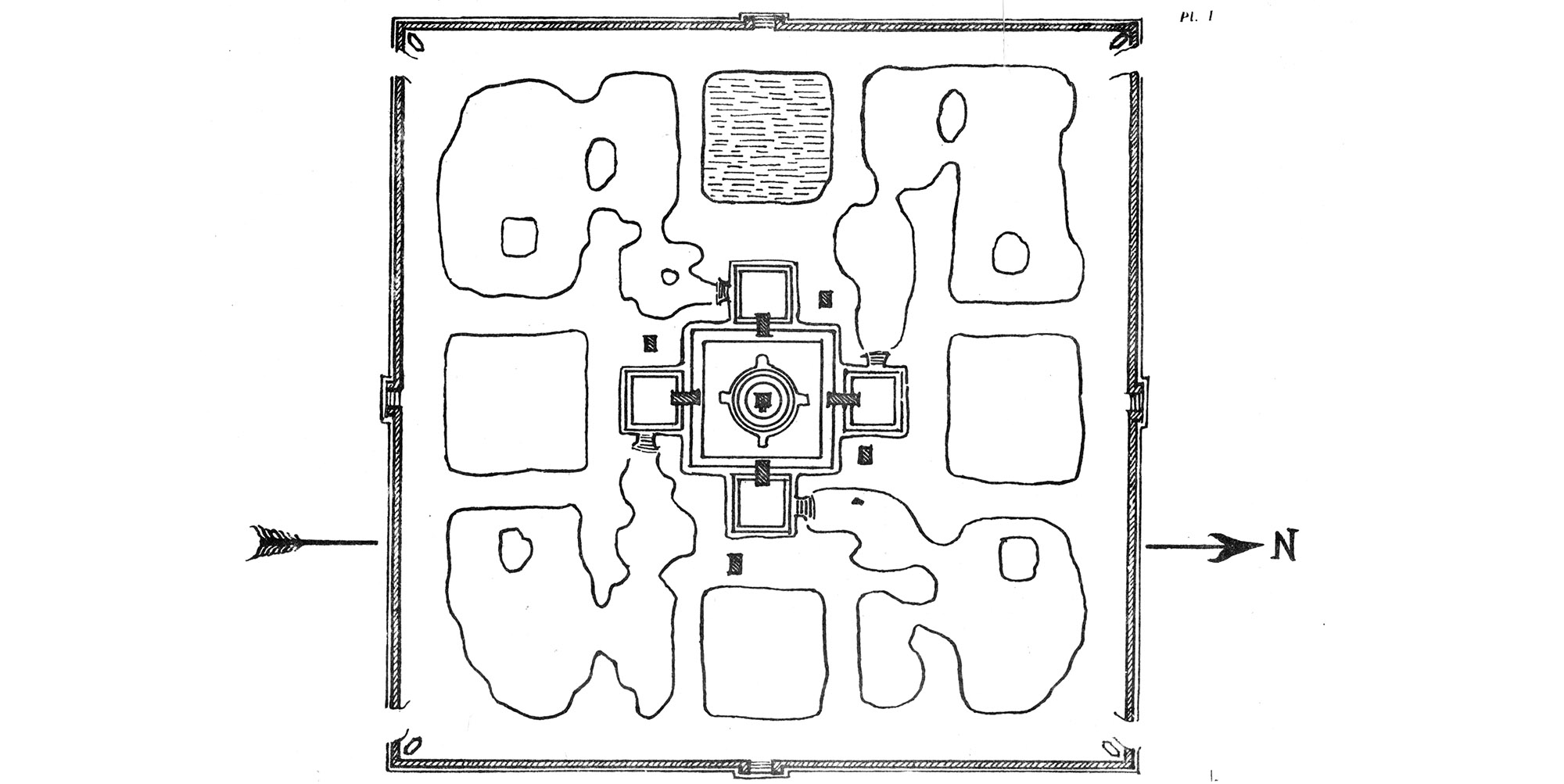
Historical Images
via EFEO/Fonds Cambodge see more
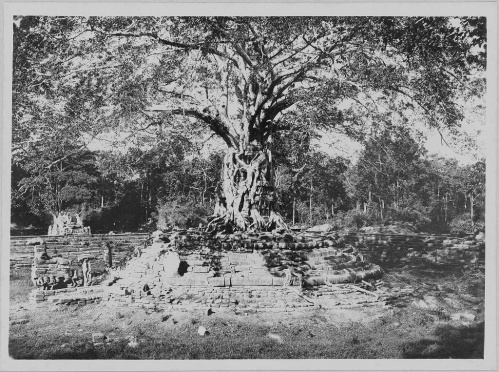
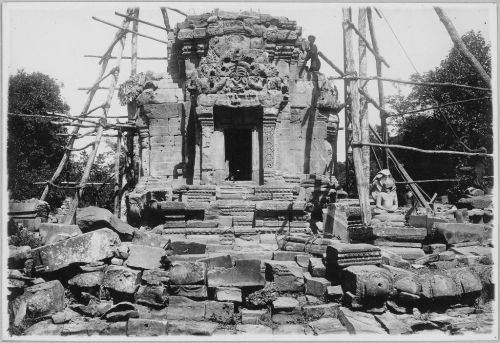
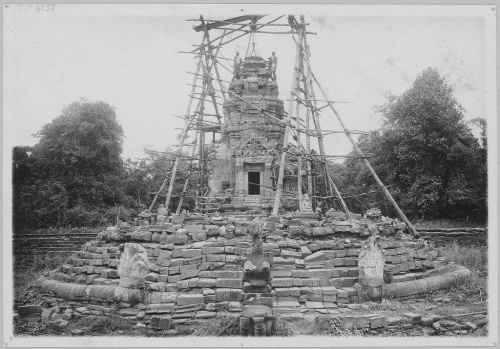
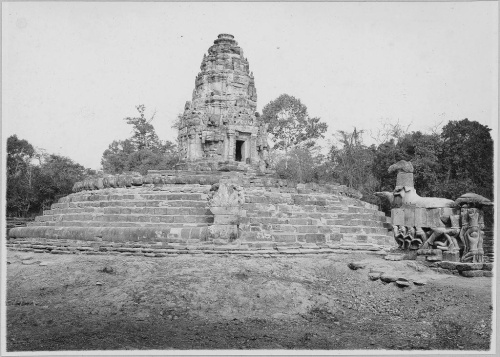
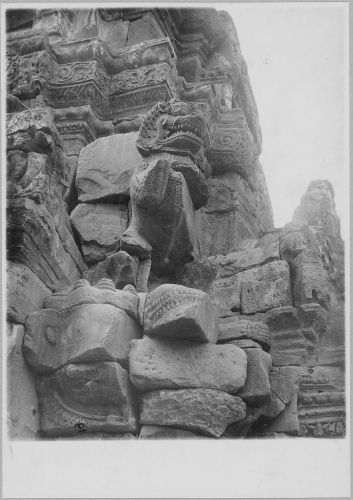

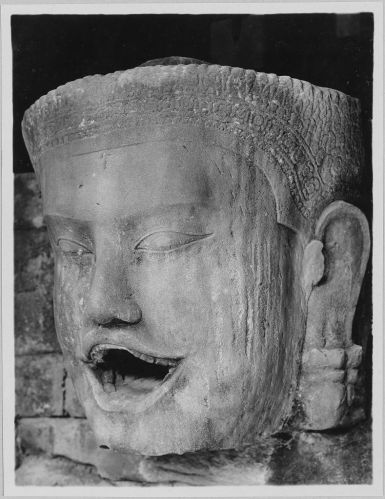
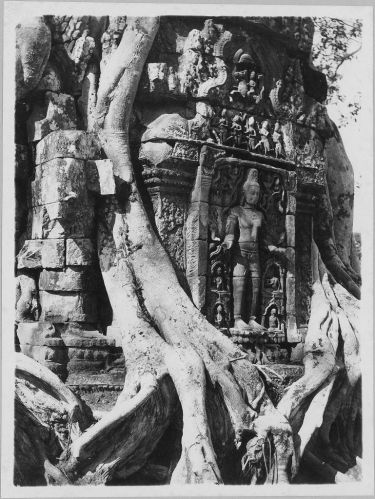
References and further reading
- Marchal Henri. Notes sur l’architecture de Nẵk Pẵn. In: Bulletin de l’Ecole française d’Extrême-Orient. Tome 26, 1926. pp. 1-10.
- Boisselier Jean. Pouvoir royal et symbolisme architectural : Neak Pean et son importance pour la royauté angkorienne. In: Arts asiatiques, tome 21, 1970. pp. 91-108.
- Goloubew Victor. Le Cheval Balaha. In: Bulletin de l’Ecole française d’Extrême-Orient. Tome 27, 1927. pp. 223-237.
- Glaize Maurice. III. Essai sur la connaissance de Nâk Pân après anastylose. In: Bulletin de l’Ecole française d’Extrême-Orient. Tome 40 N°2, 1940. pp. 351-362.
- Gao, Yang. (2020). The Idea of the Anavatapta Lake in India and Its Adoption in East Asia. Religions. 11. 134. 10.3390/rel11030134.
Map
Site Info
- Site Name: Neak Pean (Pr.) Khmer Name: ប្រាសាទនាគព័ន្ធ
- Reference ID: HA11697 | Last Update: September 19th, 2022
- Other Names: Neak Poun, Neak Poan, Neak Pean, Nak Pan, ប្រាសាទនាគព័ន្ធ
- Tags/Group: 12th Century, Angkor, Angkor Grand Circuit, Jayavarman VII, Map: Angkor's Top 30 Temples & Ancient Sites, Map: Top 100 Temples & Ancient Sites (Siem Reap), Temples
- Location: Siem Reap Province > Krong Siem Reab > Sangkat Nokor Thum > Leang Dai Village
- MoCFA ID: 413
- IK Number: 527
- Inscription Number/s: K. 564, 565, 797, 883, 959

